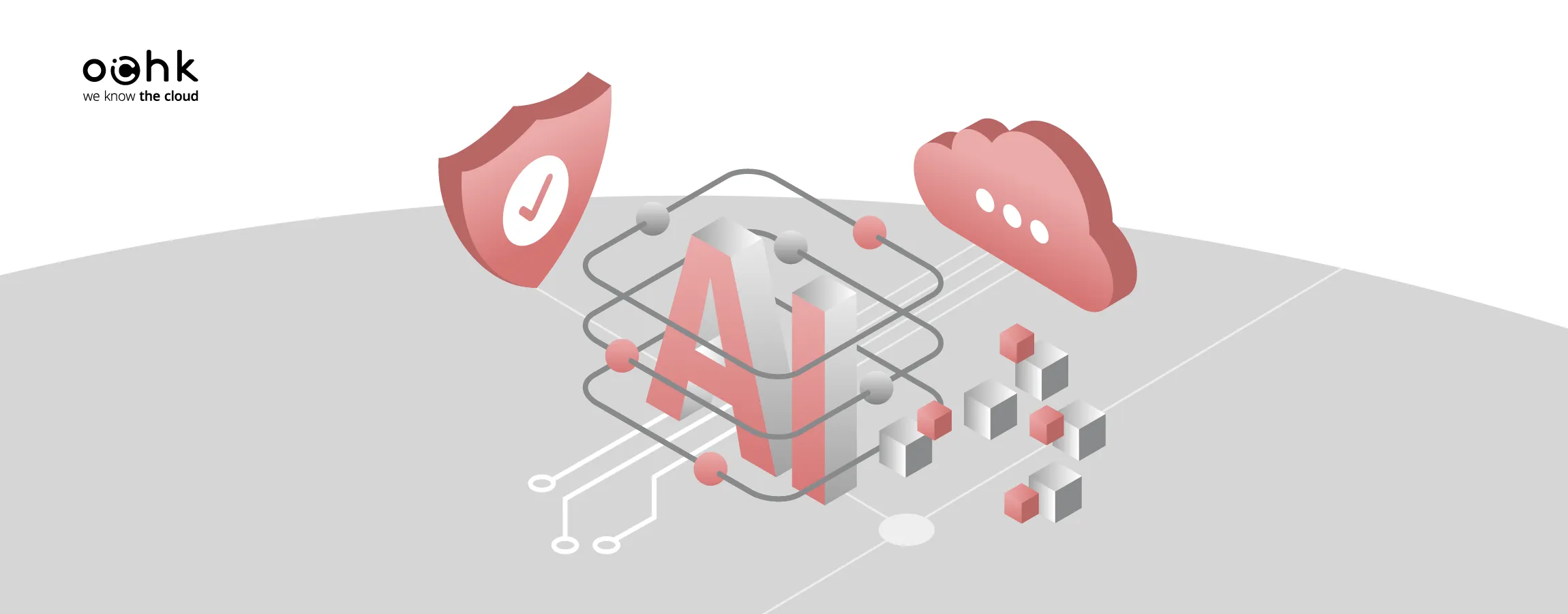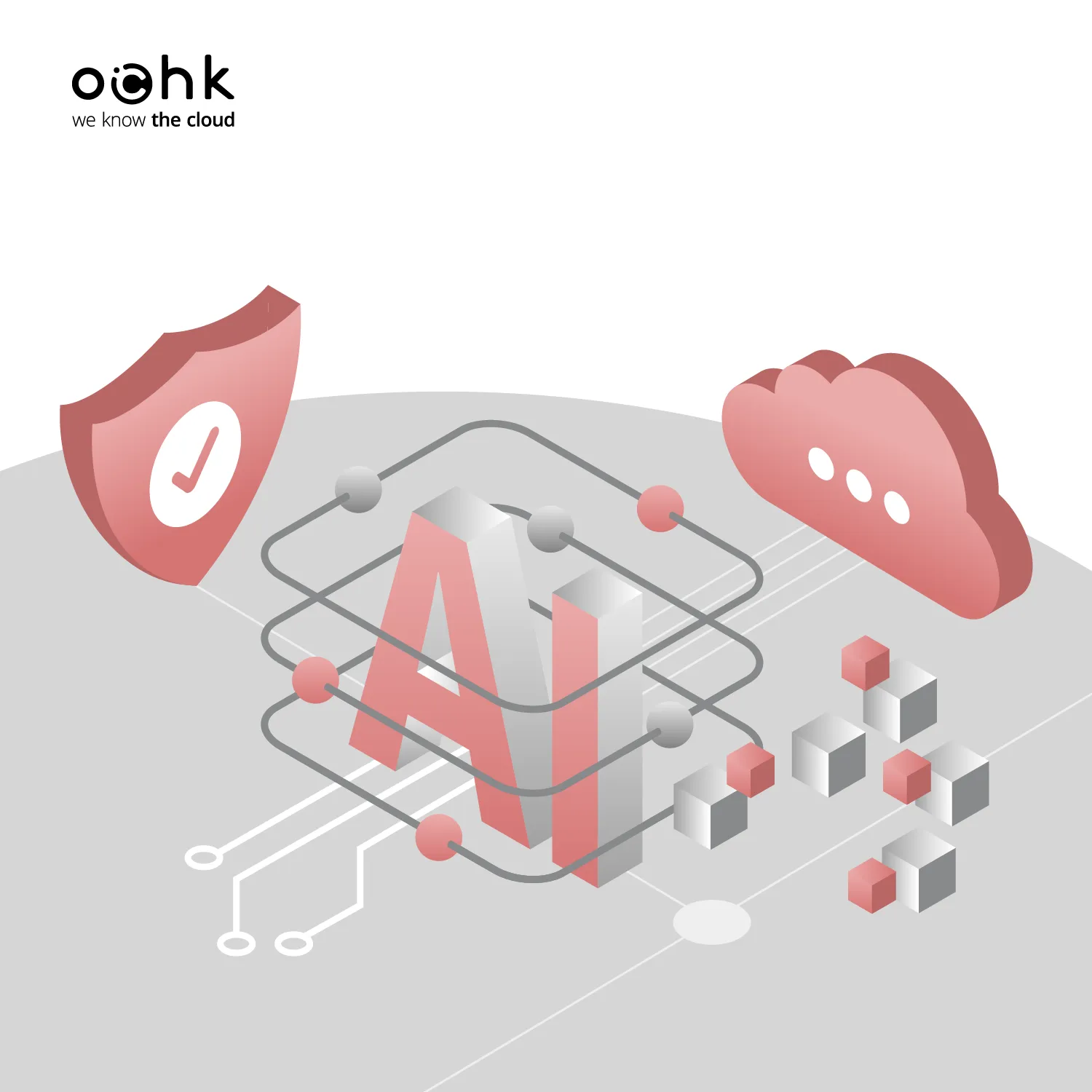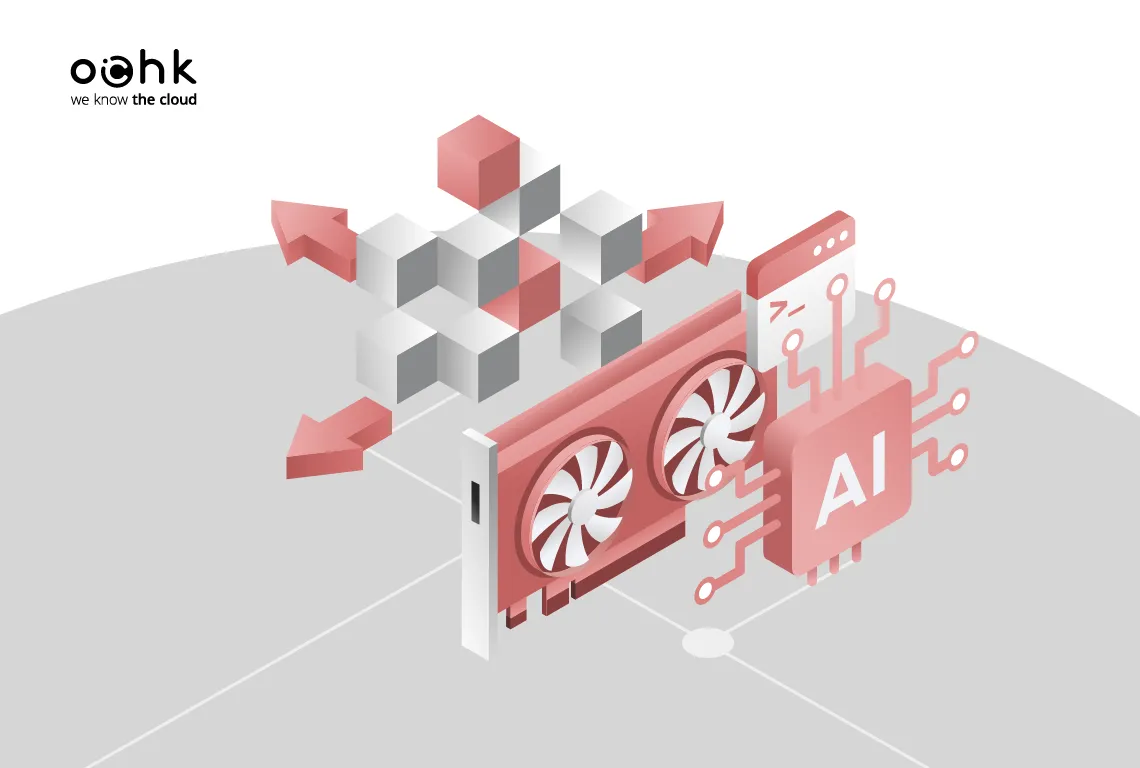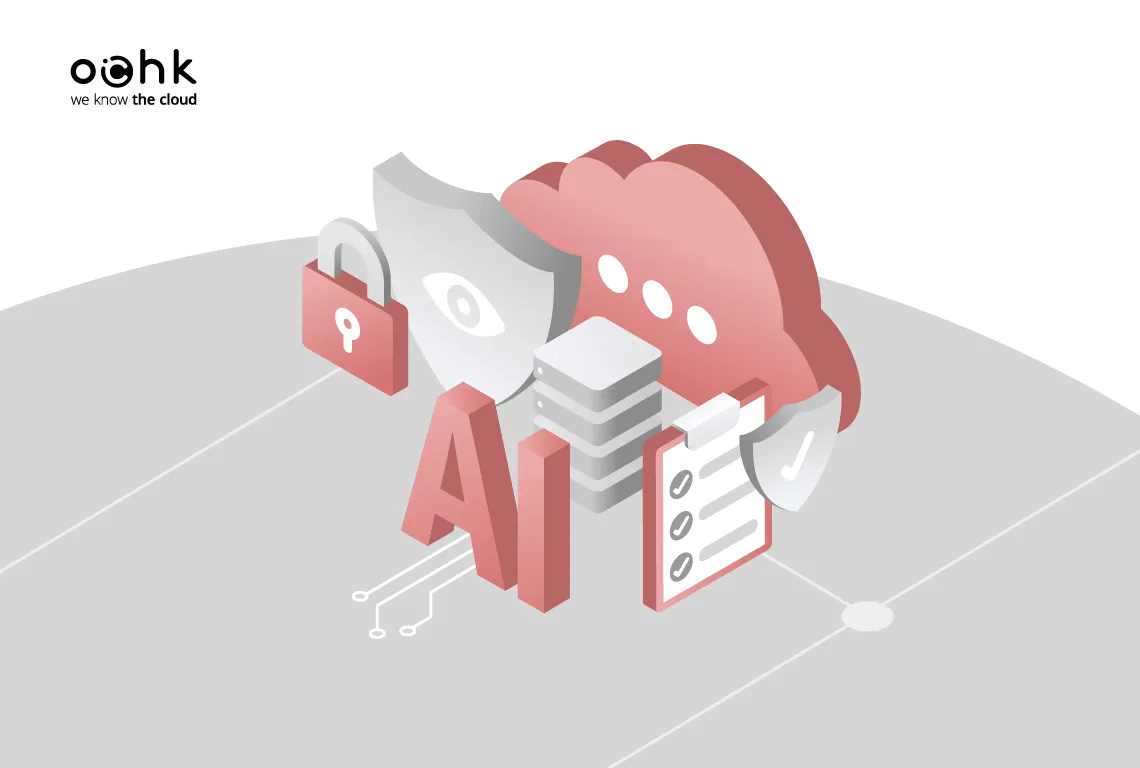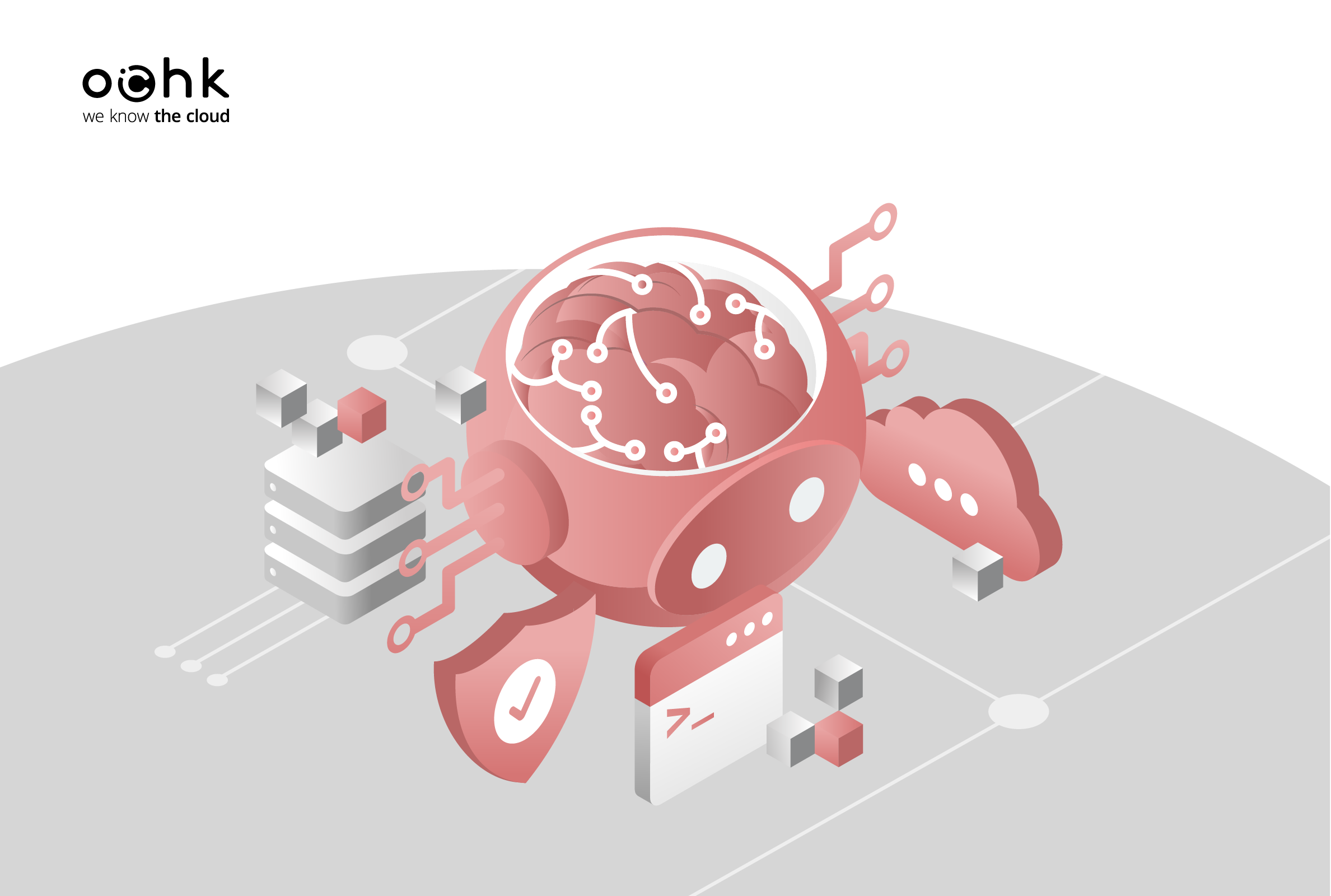Solutions based on artificial intelligence algorithms are redefining concepts such as innovation and rapid growth, while becoming a foundation for long-term competitiveness. Organizations across virtually every industry are adopting AI to automate routine tasks, accelerate key business processes, and analyze large datasets more efficiently. According to EY’s 2024 report, 25% of Polish companies have already implemented at least one AI-powered solution, and 89% declare readiness for its adoption. Notably, AI is becoming increasingly important in enhancing product offerings and strengthening relationships with customers.
If you want your organization to implement AI consciously, securely, and effectively, a key question arises: where and how should these solutions be built? In this article, you will learn:
- the AI tools and services available in Google Cloud and Microsoft Azure to build and deploy solutions;
- the examples of AI projects delivered by OChK experts;
- the capabilities of OChK Stack, our cloud platform designed to meet today’s market needs.
Enjoy your reading!
This article is the first in a series dedicated to building AI solutions in the cloud. In upcoming posts, we will cover topics such as cybersecurity, regulatory compliance, and AI agents. Follow our LinkedIn to stay up to date with the latest publications!
The Cloud: A Natural Environment for AI Development
While the cloud is still widely recognized for its flexibility in scaling resources, it is increasingly seen as the key enabler for developing next-generation technologies.
The scale of this trend is clearly reflected in the data: public cloud revenue in Europe is projected to reach USD 223.52 billion this year. At the same time, investments in artificial intelligence are surging—in February, during the European AI Action Summit, the EU announced a record €200 billion funding package dedicated to AI development. More and more companies are bridging these two worlds by building AI solutions directly in the cloud—allowing them to fully leverage data potential while ensuring proper security and governance.
Cloud platforms now offer comprehensive AI service portfolios—from natural language processing (NLP) and image recognition to speech processing and generative models that drive business process automation. Below, you'll find examples of AI tools developed by two of the top three global cloud providers: Google and Microsoft.
Google Cloud
Google Cloud plays a pivotal role in the company’s broader operations, particularly in the field of artificial intelligence. Google has been investing in AI for years, applying it to enhance its core products—which naturally translates into the advanced and comprehensive AI capabilities available on the Google Cloud platform.
Vertex AI: An Integrated Environment for AI Projects
At the heart of Google Cloud’s AI services lies Vertex AI—a unified platform that streamlines the entire machine learning lifecycle in a single environment. It enables seamless progression from data preparation, through model training and deployment, to monitoring and management (MLOps). Vertex AI democratizes access to AI by offering both robust tools for data teams and intuitive low-code/no-code interfaces for broader adoption. Key components of Vertex AI include Model Garden, Vertex AI Studio, and Agent Builder.
Model Garden
Model Garden is an extensive library of ready-to-use AI models, featuring Google’s own foundation models, such as:
- Gemini: The latest family of multimodal models capable of understanding and generating text, code, images, audio, and video, enabling the development of versatile, intelligent applications;
- Imagen: Industry-leading models for generating photorealistic images from text prompts;
- Veo: Models designed to create high-quality videos based on textual and visual input.
The library also includes over 100 popular open-source models (e.g., Llama) as well as models developed in partnership with third-party providers.
Vertex AI Studio and Agent Builder
Vertex AI Studio and Agent Builder are tools designed for rapid experimentation, testing, and fine-tuning of models, as well as for the fast development of advanced AI-powered conversational agents. These tools enable the creation of intelligent chatbots, virtual assistants, and search systems that are grounded in enterprise data, allowing them to deliver accurate, context-aware responses.
The Google Cloud Platform allows organizations to automate critical business processes and unlock new forms of customer interaction. With its high-performance, scalable infrastructure; unified Vertex AI platform; access to state-of-the-art models; and advanced hardware accelerators—such as Tensor Processing Units (TPUs) and the latest GPUs—GCP has become one of the most popular choices for companies building production-grade AI solutions.
Microsoft Azure
Microsoft’s AI ecosystem spans both ready-to-use SaaS applications—such as Copilot—and PaaS solutions in Azure for building custom models. Below you can find a few examples of how organizations are putting these tools into practice.
- Process Automation: Tools like Azure AI Document Intelligence and Power Automate help eliminate repetitive tasks, reduce costs, and improve efficiency;
- Data Analysis and Prediction: Azure Machine Learning and Microsoft Fabric support real-time analytics and model training to drive faster, more informed decisions;
- Chatbots and Virtual Assistants: Copilot Studio and Azure Bot Service make it easy to build intelligent agents for customer service or internal support using natural language understanding;
- Speech, Image, and Language Recognition: Azure AI services like Vision, Speech, and Language allow you to embed capabilities such as OCR and speech-to-text into business applications.
AI as a Service
Microsoft offers a growing portfolio of SaaS-based AI tools—known collectively as Copilots—which are built into applications such as Microsoft 365, Dynamics 365, Power Platform, and GitHub. These out-of-the-box solutions allow organizations to unlock business value quickly, without the complexity of building and managing their own infrastructure.
If you need a more tailored solution, Copilot Studio provides a low-code environment for building your own conversational assistants. It allows you to integrate enterprise data, connect to third-party systems using prebuilt connectors, and leverage large language models (like GPT) to create personalized, domain-specific interactions—without heavy developer involvement.
Building Your Own AI App in Azure
For businesses with more complex needs, building a custom AI application may be the right approach. While this path demands more resources and technical expertise, it offers full flexibility in designing a secure, purpose-built solution. Azure provides several key services to support this journey:
- Azure AI Services (e.g., Vision, Speech, Language): Ideal for traditional AI use cases like text analysis, OCR, or image processing using non-generative models;
- Azure AI Service: Generative AI based on OpenAI models; this option powers advanced chatbots, content generation, and code suggestions;
- Azure Machine Learning: A fully managed platform for data scientists to build, train, and deploy custom ML models—perfect if you’re working with proprietary data and want to create a predictive engine tailored to your needs;
- Azure AI Content Safety – A key tool for responsible AI, designed to detect and filter harmful content—whether it comes from users or AI-generated outputs.
Supporting all of the above is Azure AI Foundry, a unified platform that brings together services like Azure OpenAI, AI Search, and Prompt Flow. It accelerates AI development by simplifying workflows for building, testing, and deploying production-grade generative AI applications.
Microsoft’s AI portfolio covers the full spectrum—from embedded copilots to highly customizable platform services. The key to success lies in choosing the right tools, aligning them with your internal capabilities, and scaling them in line with your business goals.
AI Projects Delivered by OChK
Every AI project starts with a real-world business challenge. At OChK, we help organizations turn their ideas into working solutions—whether they’re just beginning to experiment with machine learning or scaling advanced models in production. Together, we turn data and technology into innovative tools that solve problems in unconventional ways. Below are two examples of AI deployments built in Google Cloud.
1. Building an Anti-Default Prediction Model
A fintech company approached OChK with a clear goal: analyze and predict customer credit default risk. They needed a predictive mechanism that could evaluate whether a client would likely fail to repay financing based on selected characteristics. To meet this need, OChK experts designed and trained a machine learning model that forecasts the likelihood of default based on customer data. The project was delivered in several stages:
- defining the business concept of default and aligning it with available data;
- identifying relevant data sources and preparing them for modeling (including aggregation and enrichment);
- building an analytical dataset with nearly 1,000 features for training, validating, and testing;
- creating a prototype ML model for the selected use case;
- evaluating model performance and applying scoring to current data.
The solution leveraged Google Cloud technologies, including: BigQuery, BigQuery ML, AutoML, Cloud Storage, Dataplex, and Dataform.
As a result, the model identified a high-risk customer segment with twice the accuracy of previous methods—allowing the organization to tighten credit approval processes and reduce the rate of non-performing loans in its overall portfolio.
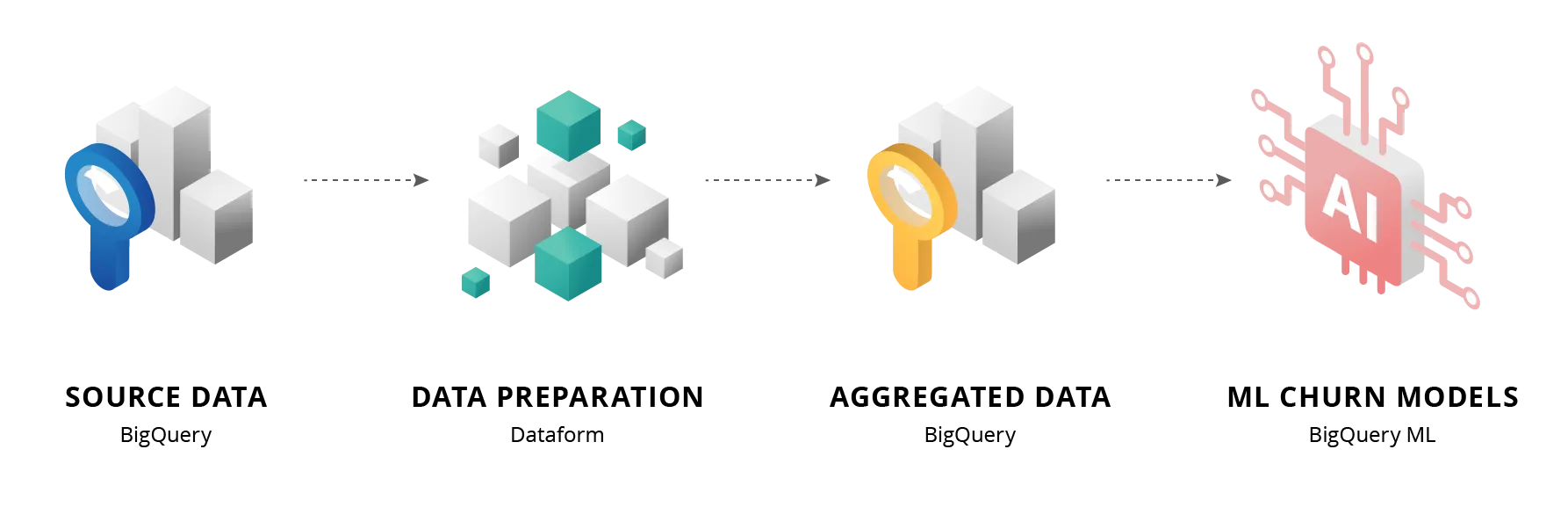
Fig. 1: How the solution worked
2. Tackling Tech Debt and Securing Years of Institutional Know-How
This company partnered with OChK to address a long-standing challenge: organizing years’ worth of scattered, undocumented knowledge. This included technical documentation, employee expertise, operational manuals, and process guidelines for complex chemical and production workflows. The goal was to consolidate this technological legacy into a structured knowledge base that would support faster onboarding and more effective job-specific training.
Using tools available in Google Cloud—including Gemini, Vertex AI, and Document AI—OChK experts approached the problem holistically and delivered two core solutions:
- an advanced AI knowledge assistant, built on DocChat, that performs contextual analysis of digitized documents in various formats. The system classifies and organizes content for easy access and discovery;
- AI-powered self-training tools, allowing employees to verify and deepen their knowledge. These tools use generative models to create topic-specific quizzes at varying difficulty levels, and perform semantic scoring of responses.
The result is a centralized, secure knowledge repository that significantly improves access to expert-level information that was previously fragmented across teams and systems. It also boosts operational efficiency by reducing the time needed to train new employees.
The next phase of the project will focus on fine-tuning the models and expanding the system’s capabilities—such as integrating with external domain-specific knowledge bases and building a simulator of physical production systems. These upgrades aim to further improve the accuracy and contextual relevance of GenAI-generated answers.
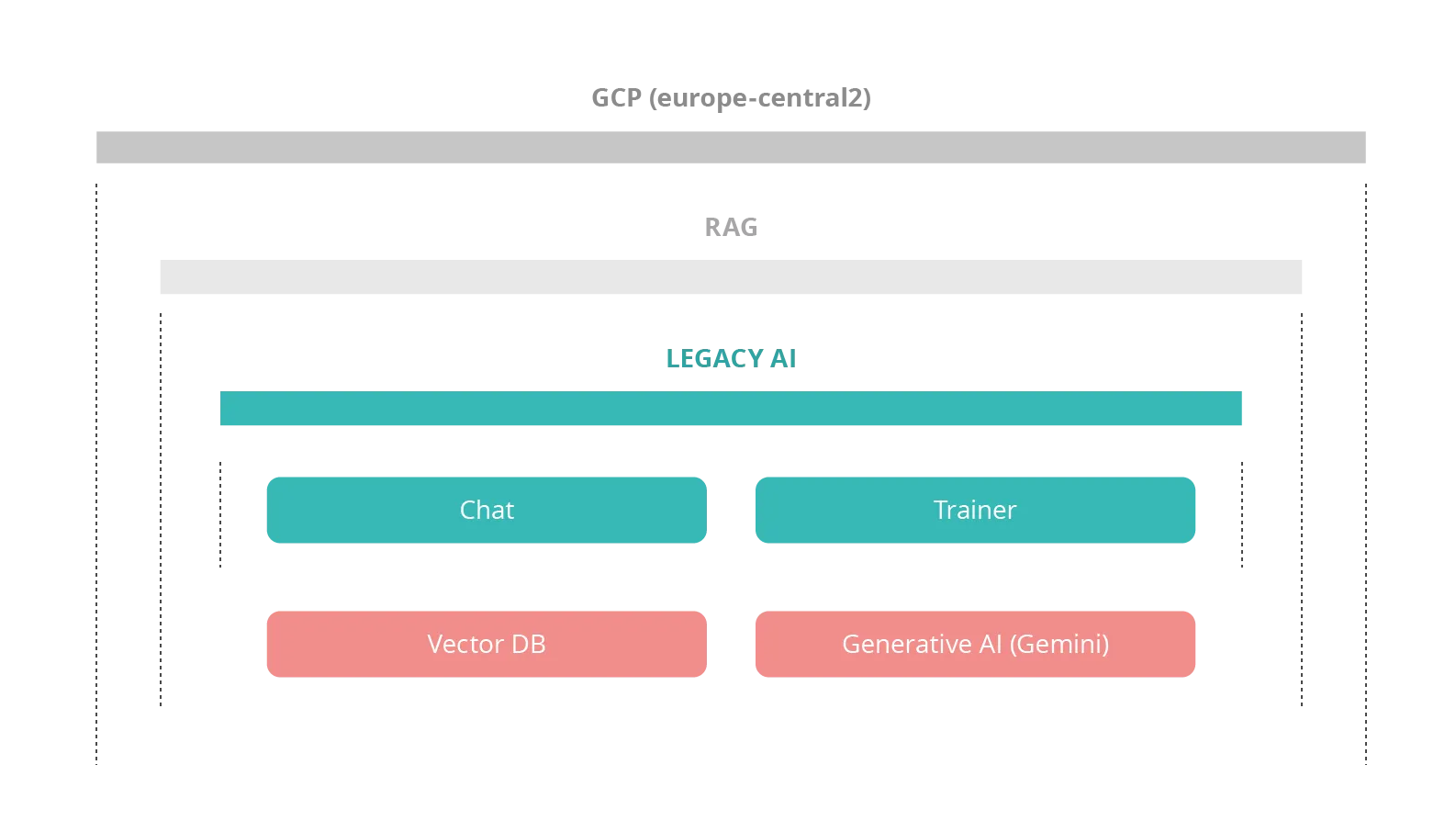
Fig. 2: The architecture of the applied solution
OChK Stack: Responding to a Changing Market Landscape
As organizations become more tech-savvy and the cybersecurity and compliance landscape continues to evolve, innovation alone is no longer enough when choosing a cloud platform. Today, just as important are regulatory compliance (with frameworks like the AI Act, NIS2, or DORA), digital resilience, and full control over where and how data is processed—and how AI models are trained.
In this context, technological sovereignty is gaining momentum. While global cloud providers still lead the market, there’s growing demand for alternative solutions developed and hosted locally. Initiatives like Gaia-X and increased investment in European cloud operators show that many organizations are now actively looking for platforms that ensure local data residency and reduce dependency on foreign technologies.
Uncertainty is also growing around the virtualization layer. The high-profile acquisition of VMware by Broadcom—and the surprise rollout of its new licensing model—has prompted many companies to reassess their options. Dependence on a single vendor now poses a serious operational and financial risk. In contrast, open solutions offer users real influence over technology development, greater flexibility, and protection against vendor lock-in.
That’s why we developed OChK Stack—a modern cloud platform designed for organizations that need technological independence, strong security, and full control over their IT environment.
How Does OChK Stack Work?
OChK Stack is built on open-source software and our proprietary platform—OChK Platform. It’s a public cloud environment created and managed by our team of local experts. When deployed on-premises as a private cloud, OChK Stack can be up and running in just a few weeks. Installed directly within the client’s infrastructure, it delivers:
- full control over security – including the configuration of access policies, encryption, and other safety mechanisms,
- protection against external access – integration with private infrastructure reduces the risk of unauthorized exposure,
- no shared infrastructure risks – ensuring isolation and full data ownership.

Fig. 3: Functions available within the OChK Stack
OChK Stack can be tailored to meet the specific needs of any organization—both in terms of compute capacity and the range of services that support business growth. It offers everything from core infrastructure components—such as virtual machines, storage, and networking—to fully managed services, databases, Kubernetes clusters, and advanced AI/ML capabilities, including GPU support for demanding workloads.
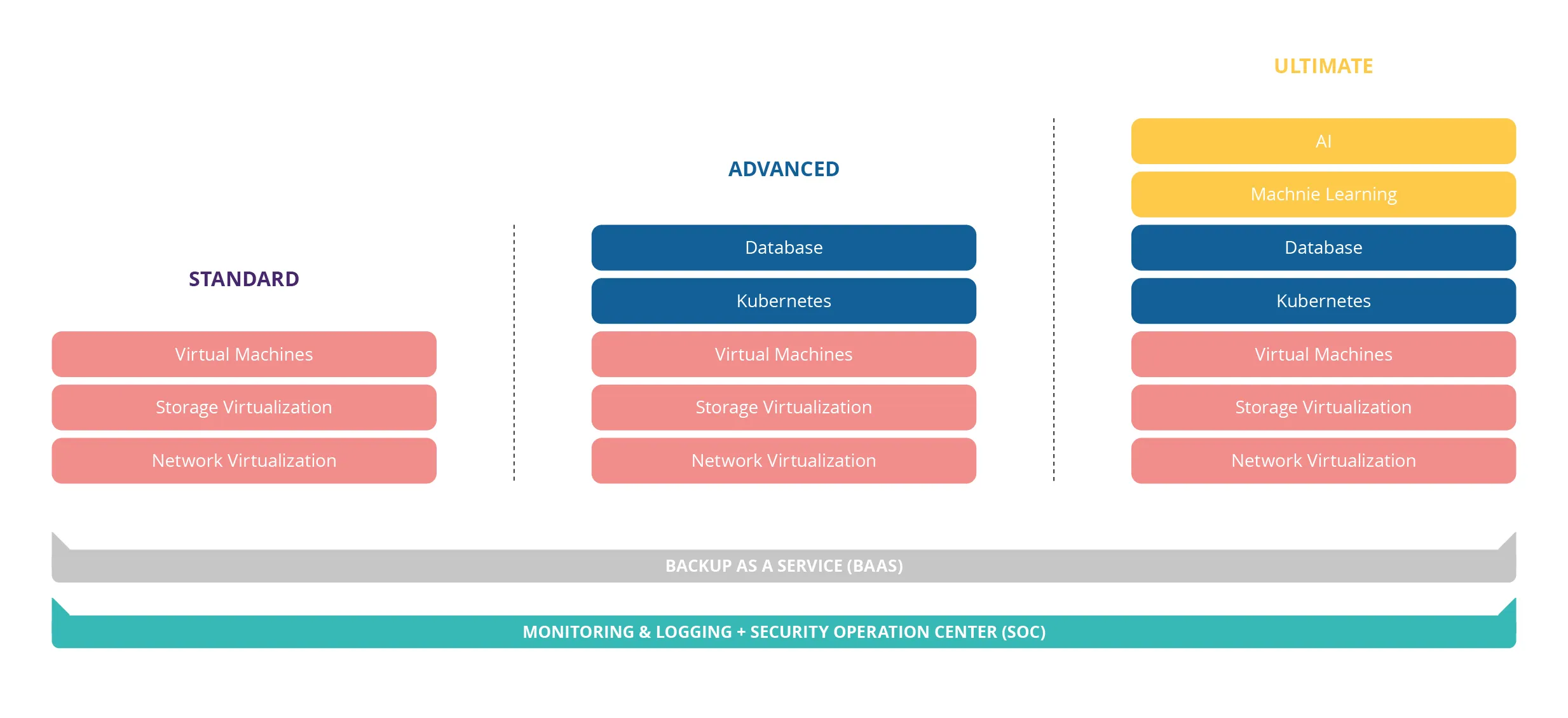
Fig. 4: OChK Stack services range from basic infrastructure elements to managed Kubernetes clusters and advanced AI/ML services
Built on local expertise and deployed within local infrastructure, OChK Stack is developed and supported by a dedicated team based in Poland. It offers a reliable, homegrown alternative to large, foreign cloud platforms.
Visit the OChK Stack page to find out more about this product. You can also contact us with any questions using the form below.
